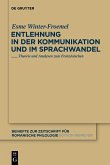While it is commonly assumed that languages epenthesize context-free default vowels, this book shows that in loanword adaptation, several strategies are found which interact intricately. Large loanword corpora in Shona, Sranan, Samoan and Kinyarwanda are analyzed statistically, and the patterns are modeled in a version of Optimality Theory which introduces constraints on autosegmental representations. The focus of this book is on English loans in Shona, providing an in-depth empirical and formal analysis of epenthesis in this language. The analysis of additional languages allows for solid typological generalizations. In addition, a diachronic study of epenthesis in Sranan provides insight into how insertion patterns develop historically. In all languages analyzed, default epenthesis exists alongside vowel harmony and spreading from adjacent consonants. While different languages prefer different strategies, these strategies are subject to the same set of constraints, however. In spreading, feature markedness plays an important role alongside sonority. We suggest universal markedness scales which combine with constraints on autosegmental configurations to model the patterns found in individual languages and at the same time to constrain the range of possible crosslinguistic variation.
Dieser Download kann aus rechtlichen Gründen nur mit Rechnungsadresse in A, B, BG, CY, CZ, D, DK, EW, E, FIN, F, GR, HR, H, IRL, I, LT, L, LR, M, NL, PL, P, R, S, SLO, SK ausgeliefert werden.









